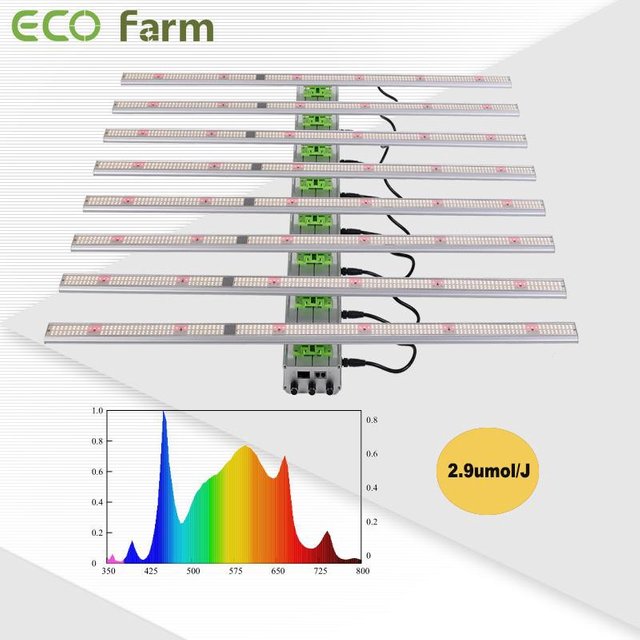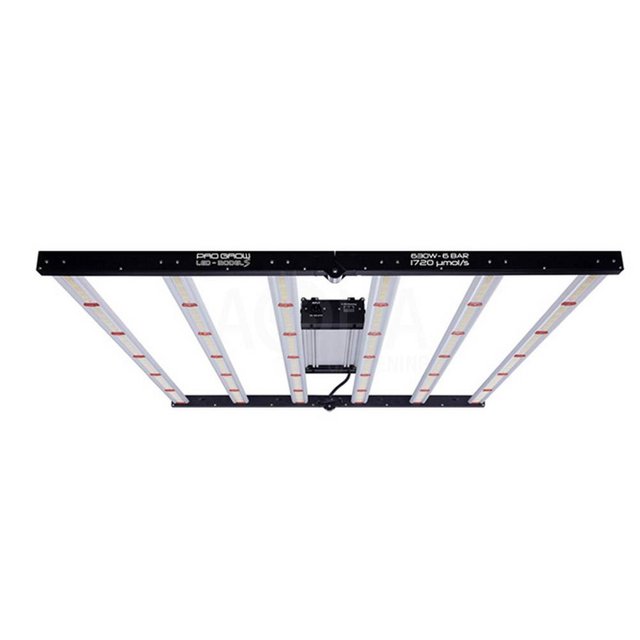LED grow lights are becoming more and more popular among plants growers — and for good reason. Whether you’re growing in a tiny closet or operating a large-scale indoor operation, there are several benefits to using LED grow lights. The best LED grow lights demonstrate how much this technology has to offer.
Why Use LED Grow Lights?
LED grow lights produce a lot of light without sucking up a whole lot of electricity. That means that the immediate expenses of growing indoors are significantly reduced by using LED grow lights. On top of that, many LED grow lights can produce the full spectrum of light, which means that a single setup can be used throughout the entire life cycle of your plants.
Beyond all that, LED grow lights also don’t get very hot. Since they do not introduce heat to your grow room, you don’t have to stress fans and ventilation systems as much as you do with other types of lights. This is yet another way LEDs can save you time, money, and hassle.
Similarly, LED grow lights are relatively low-key to install and use. While other types of lights require heavy ballasts and large reflectors, LED grow lights tend to be lighter and easier to install.
How should users space their grow lights?
Spacing your grow lights depends on the intensity and the area of coverage. However, to be safe, it is better to space them about 4-inches apart.
If you place them too close, there is a high chance of overlapping, which will expose some plants to more light than necessary. Spacing them too far apart will result in a loss of energy as plants will not be able to maximize the light released.
In short, make sure that your lights do not overlap too much, as this will result in too much heat. Adequate spacing of the lights makes sure that the light produced works for the best of the plants.
ECO Farm GL 640W Samsung 281B PRO Chips LED Grow Light With Separately UV+IR Control
Features:
The ECO Farm LED Grow Light delivers growers and indoor gardeners the ability to stimulate pre-visibility, boost yields and increase quality all season long. The grow light is matched with Samsung LM281B+ Pro; 640W has 2808 LEDs, to deliver spectacular PPF output up to 2.9 umol/J, The light intensity is higher, the light attenuation is smaller, and the lumen and PAR value are better than ordinary LED. It enables you to obtain a 30% higher output than HPS. In addition, the plant grow light uses an advanced waterproof power supply, installed in The outside of the lamp is easy to replace. 3000K+5000k+660nm+ir 730nm+UV 395nm full-spectrum growth light is infinitely close to sunlight, This kind of growth lamp is a full-period lighting solution suitable for all growth environments (including humid environments), and is an ideal choice for greenhouse or indoor lighting.
Input Power 640W
Efficacy: 2.9 μmol/J
Input Voltage Autosensing — 100–277V
Lifetime 50,000 hours
Power Factor>90%
Ambient Temperature-40–40°C
Chip- Branded: Samsung 281B+Pro
Number of light bars: 6
Driver: UL certified Sonsen Driver
Coverage MAX(VEG/Bloom): 6'x6'/5'x5'
Light Dimension: 1100*1100*70mm
Net Weight: 11.5kg
Certificate: CE, ROHS, FCC
Pro Grow 6 Bar 630w LED Grow Light
Features:
LED Model S 630W is a high-performance & affordable top-lighting solution for horticulture. Designed for applications requiring efficient, precise, and uniform levels of PPFD. The LED Model S 630W is a 1700 μmol/s fixture with an impressive efficiency of 2.7 μmol/J per watt. It can be used in a top light, multi-tiered, or indoor grow tent application. This powerful, full-spectrum light source is intended for full-term plant growth from the vegetative stage to the higher light requiring bloom stage. LED Model S 630W is compatible with our controllers. It is equipped with an external RJ14 Cable and allows you to install 200 fixtures per controller port by simply daisy-chaining the fixtures.
Input Power 630W
Efficacy: 2.7 μmol/J
PPF-1700 μmol/s
Input Voltage Autosensing — 100–277V
Mounting Height⩾6″ (15cm) Above Canopy
Lifetime 50,000 hours
Power Factor>90%
Colour Rendering Index -90rs
Ambient Temperature-40–40°C
Storage Environment-40–85°C RH10%-95%
Chip- Branded LED
How do you tell if the light intensity is too much?
LED grow lights can be intense for plants, especially if placed too close to the plant. A sign that the light intensity is too much is when the leaves start browning at the edges or bleach. If the light intensity is not reduced, these leaves will curl up and eventually wilt.
Manufacturers always specify the recommended height for the LED lights to be suspended from the plants. In addition, it is crucial that the growing area is well ventilated to dissipate any heat that may damage the plants unnecessarily.
Are Led grow lights expensive to run?
LED grow lights do not consume a lot of electricity, and therefore they are not expensive to run. Purchasing the units might cost you a pretty penny, but once you install them, the utility bills are not as high. Some models in the market come with adjustable settings and timers; hence you can save on electricity when the lights are not needed 24/7.
Things you need to consider when buying LED grow lights
The LED Chip
You always want to look for chips that are at least 3W, any less than that won’t give your plants enough consistent light coverage. This means each chip needs to be 3W, not 3 lights of 1W LEDs, so look out for that when reading the description. The 3W chip offers the best quality in whites, blues, and reds.
The Output
This is also important; you want to read product descriptions for total output. How many units does the lamp claim to have? This can be 300W, 400, 600, or even 1000. Always check for the output and look for at least 300W.
Understand that when it comes to LEDs you can’t always get 100% power so you usually end up with slightly less wattage than what the recommended is, and chips will always burn out, no matter what the quality, so the higher wattage the more you can compensate for wattage loss.
The Spectrum
Remember that it is the red blues, IR, and UV that also counts when growing your plant crop, so you want to stick to the ideal PAR values. Look for blues that have a range from 440–470nm, with rends in the 640 to 660nm.
Cooling Aspects
These lamps stay on for the better part of the day, often 15 hours at a time, so you want to make sure they have internal fans that protect the lamp but also those that protect the plants. If it gets too hot in there you could damage your plants.
LED lights run cooler than HPS bulbs as they only let off about 15 to 25 % of the energy as heat, but the heat occurs behind the bulb in LEDs, and that area needs to be protected. A good quality lamp will have a thick aluminum heat sink attached to the back exterior or interior area which forces the heat away from the chips.
The Lens
Good quality lamps will have an optical lens that magnifies the light-giving about 25% more penetration of nutrients for the plants. This makes for a more expensive lamp but is certainly worth the price.
Materials
The LEDs should have a warranty, preferably one of 5 to 10 years. In fact, LEDs of this nature are supposed to have a life span of about 10 years, especially in some of the more expensive panels. Look for panels that are sturdily built with aluminum, steel, or materials that won’t easily break.
The Guarantee
Look for lamps with more than a one-year guarantee, as I mentioned before, LEDs are made to last up to 10 years, so I am somewhat suspicious of manufacturers who only offer a one-year guarantee, as this is an indication of a cheaply made housing or cabling system. I usually look for a 3-year guarantee on parts.
The parts guarantee is better anyway because the lamp will continue to work regardless of the part that needs replacing. You can easily replace the missing part yourself when it arrives, and in the meantime, your plants still get the nutrients they need.
Conclusion
At first, shopping for grow lights for commercial spaces can be confusing because there are so many options in the market. It is up to you to filter the best commercial LED grow lights from the average, just by looking at the features offered. Apart from the features offered, remember that the price also counts because you cannot purchase what you cannot afford.

